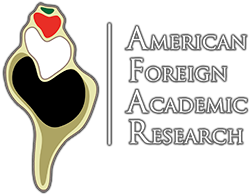Meet Catalina Urquijo: Program Director and AFAR On-Site Archaeologist
We caught up with Catalina high on a hilltop at the Zorita de los Canes project, not far from Madrid where she grew up. She’s in her element — surrounded by hard-working students conducting archaeology research for AFAR. Catalina speaks of her work as a privilege, rather than a job, and credits her love of travel and the outdoors guiding her to this life-long profession.
Catalina and students continuing their work on the passageway discovered three years ago in the Castle of Zorita.
Catalina and her husband, Dionisio, are important parts of the AFAR program and have been involved in the organization since 2014. In addition to the work at Zorita, she has also helped with AFAR projects in Portugal and Greece and talks of the different memories from past projects.
In the Castle of Zorita, built in the beginning of the 9th century, she and a group were excavating in the chambers inside the castle and found a hole that appeared to be an old staircase. They started to dig, and it opened in two directions. “I took a lantern and jumped into the hole!” says Catalina. “This summer the AFAR students continue to uncover parts of the passageway discovered three years ago.”
Portugal, she describes, as a very different site with the same thrilling experiences. In an area where there is mainly sand, she recalls finding mosaics that had been brought from the mainland, mixed in with materials to construct houses. This debris was also used to cover vats where salt was mixed with freshly caught fish to prepare fish sauce. “These were colorful finds in the desert.”
And in Greece, she connects the dots to the AFAR students who work on the site in Ruins of Mieza. “Alexander the Great lived in this part of northern Greece as a young boy and was the same age as the students who are excavating here this summer,” says Catalina, who speaks fondly of all the students who travel to these sites, especially those that come back every summer. “I love that they keep coming back year after year, and I get to know them like family.”
Students feel the same, especially those like Matthew Hines, a founding member of the Zorita de los Canes project, who credits Catalina for teaching a deeper appreciation of history that went beyond books in school and for “being the most genuine people [Catalina and Dionisio] I’ve ever met.”
Catalina and Dionisio are integral to the Spain project, and beloved by all.
“Archaeology has been our lives,” says Catalina, who celebrates 30 years of marriage this month with her partner in life and archaeology. “When we met it was just an emerging profession in Spain and we were both following our passions.”
Q & A with Catalina
Today, Catalina calls Santa Cruz de la zarza home, and is Director of ArcheoSpain, an international organization that offers field school opportunities in Spain, Italy and Greece. She and Dionisio founded their first field school in 1998. In addition to her field work, she taught at the Nebrija University and the Center for Studies Alvaro Duran Art and Enterprise. Here ‘s few more insights and fun facts about her life as an archaeologist.
Q: What’s the toughest thing about working on AFAR Projects?
A: The hardest thing is organizing everything in advance of summer. I want everything to be perfect – it’s like planning for a big holiday. There are permits, paperwork and lectures to prepare, but it’s so rewarding when everyone arrives.
Q: What has been the most rewarding thing you’ve taken from your AFAR experiences?
A: Definitely the people and the relationships. I’ve made incredible friends, that are like family.
Q: Tell us something very few people know about you?
A: I’m the oldest of five siblings and I had a father who loved to travel. He was crazy about pottery, so when I was a kid we’d travel throughout Spain to small villages collecting pottery and learning how it was made. These adventures help me today in my career.
Q: What would you be today if you weren’t an archaeologist?
A: I’d probably be organizing group trips around the world with a philanthropic component. I believe we can learn a lot from other societies.
Q: Which archaeological site (other than AFAR) would you love the opportunity to work at?
A: Three are so many, but if I’m dreaming, I’d have to say Petra – Indiana Jones style.
Q: What’s the most recent book you’ve read?
A: I recently read again one of my favorite books – The Innocent Anthropologist, about an Anthropologist conducting research in Africa and all the crazy adventures he went through.
Q: If you had to pick one non-essential item to pack for a project, what would it be?
A: A good camera, because there are so many beautiful scenes and moments to capture. But I tell students to leave their lap top at home. There are so many things to do…



